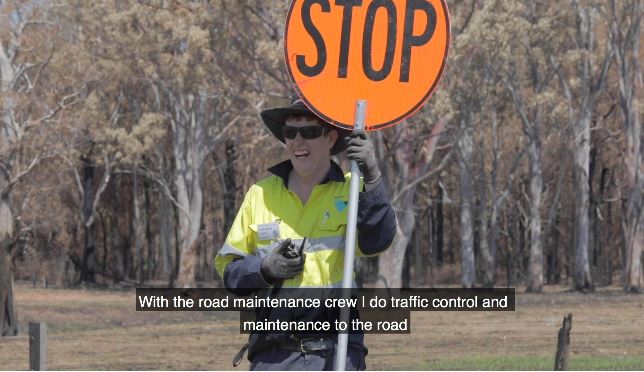Did you know 1 in 5 people in Australia is living with disability yet only 54% of those are employed?
It’s a statistic that needs referring to because with ever-growing skills shortages, there is an untapped workforce that deserves looking at more closely. Not just to fill skills gaps but to potentially increase productivity, boost staff morale and lessen staff turnover.
Brad Parker came to ON-Q Disability Employment Services (a part of The BUSY Group Ltd) looking for work and they supported him to gain his traffic control ticket and other licenses. Not long after, Richmond Valley Council put him on their road maintenance team, as part of their youth employment strategy which includes hiring young people with disability.
“Brad’s a great team player and that’s because he’s got a great attitude. He’s positive every day of the week, you know the feedback I get from his supervisors – he’s just a pleasure to have on the team, bounces into work and gets the job done. That attitude of being grateful to have a job, its infectious”, Vaughan McDonald, General Manager of Richmond Valley Council stated.
Watch Brad’s story here:
It Makes Good Business Sense
Businesses around the world are increasingly finding the advantages to their bottom line when hiring persons with a disability. A 2018 study by Accenture reports that businesses that actively seek to employ people with disabilities outperform businesses that do not. Their revenues were 28% higher, net income was two times more, and profit margins were higher by 30%. Additionally, employers who embraced disability saw a 90% increase in employee retention.
One such business, Walgreens (the second largest pharmacy store chain in the US), recently opened a $175 million distribution centre in California. Randy Lewis, senior vice president for distribution and logistics, had a vision to use technology to create opportunities for persons with disability and equipped the distribution centre with bar code scanners and specialised operator interfaces.
The result? With 40% of the 264 persons employed at the distribution centre being persons with disability, the centre is also 20% more efficient than the pharmacy chain’s older distribution centres.
“Technology is not the story here, although the things we did made operations better,” Lewis says.
“With these workers we have the lowest turnover and less absenteeism, and there are a lot of other rational arguments you can make. We opened our doors to our top suppliers. They were expecting to learn all about technology. I showed them a workforce that could perform just as well if not better than those without disabilities.”
References:

